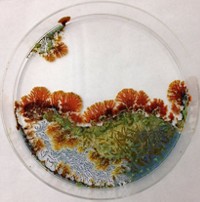Advertisement
Grab your lab coat. Let's get started
Welcome!
Welcome!
Create an account below to get 6 C&EN articles per month, receive newsletters and more - all free.
It seems this is your first time logging in online. Please enter the following information to continue.
As an ACS member you automatically get access to this site. All we need is few more details to create your reading experience.
Not you? Sign in with a different account.
Not you? Sign in with a different account.
ERROR 1
ERROR 1
ERROR 2
ERROR 2
ERROR 2
ERROR 2
ERROR 2
Password and Confirm password must match.
If you have an ACS member number, please enter it here so we can link this account to your membership. (optional)
ERROR 2
ACS values your privacy. By submitting your information, you are gaining access to C&EN and subscribing to our weekly newsletter. We use the information you provide to make your reading experience better, and we will never sell your data to third party members.
Environment
How Copper Gets Its Green Patina
Time-lapse synchrotron X-ray diffraction provides a first glimpse of the growth of aesthetic nantokite on copper-clad buildings
by Sarah Everts
May 21, 2012
| A version of this story appeared in
Volume 90, Issue 21
Most people wandering past a building with copper siding or roofing have noticed that the metal corrodes into a potpourri of pretty green minerals, one of which is cuprous chloride (CuCl), called nantokite. Now, researchers led by Annemie Adriaens of Ghent University, in Belgium, have used time-lapse synchrotron X-ray diffraction to take a first glimpse of the growth of nantokite on copper (Anal. Chem., DOI: 10.1021/ac300457e). The research will help architects and do-it-yourselfers who want to purposely elicit the green corrosion in copper-clad buildings, as well as conservation scientists who want to understand how copper objects corrode, Adriaens says. The team produced nantokite in a synchrotron sample cell via two known methods: The first technique coats cupric chloride (CuCl2) on copper in the absence of air, whereas the second technique simply drops cupric chloride on copper in the presence of air. The researchers found that the rustic green patina appears whether or not the reaction is exposed to air. However, they noticed that rinsing nantokite in water after the reaction was complete—a typical protocol in do-it-yourself recipes—caused side reactions that produced red cuprite (Cu2O) and greenish paratacamite [Cu2(OH)3Cl].
GOING GREEN: A copper ingot from Crete displaying corrosion. Chris 73/Wikimedia Commons




Join the conversation
Contact the reporter
Submit a Letter to the Editor for publication
Engage with us on Twitter